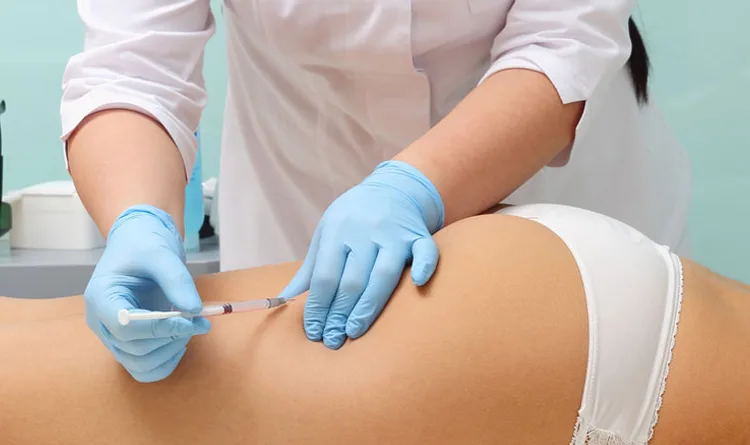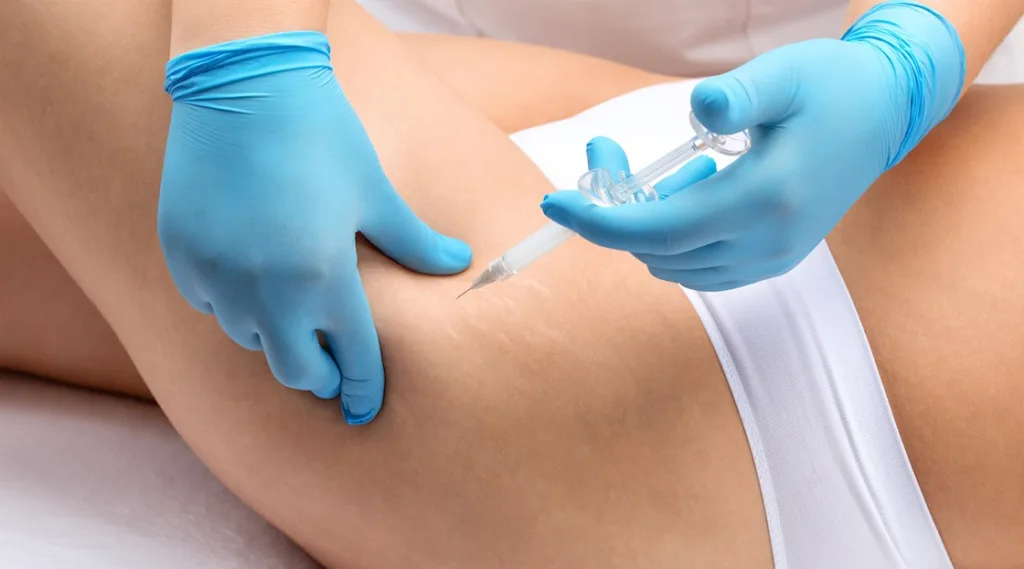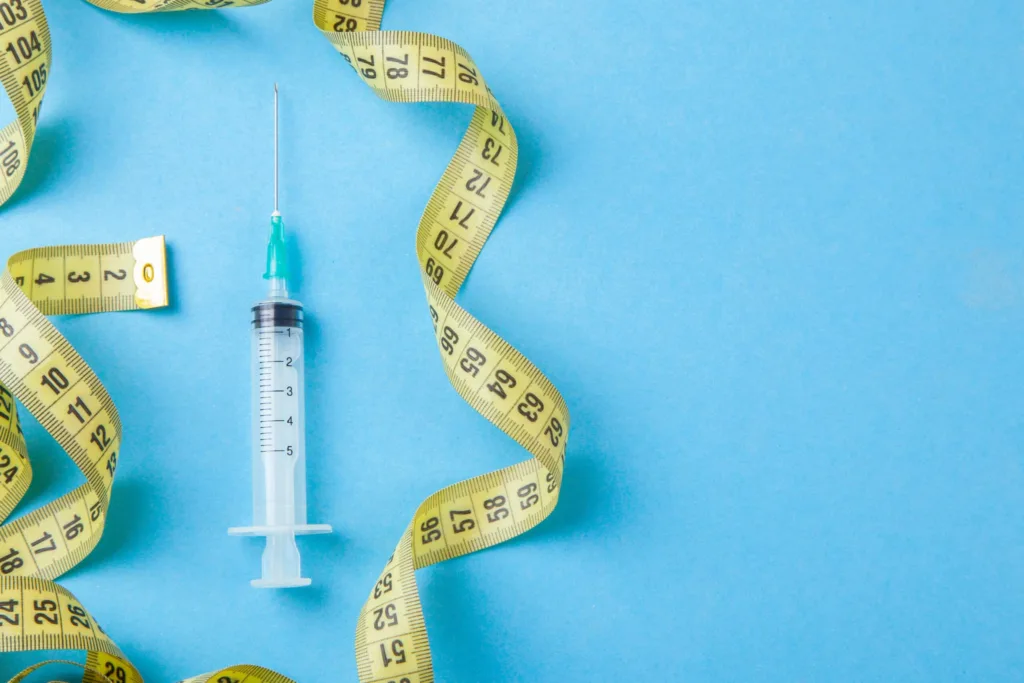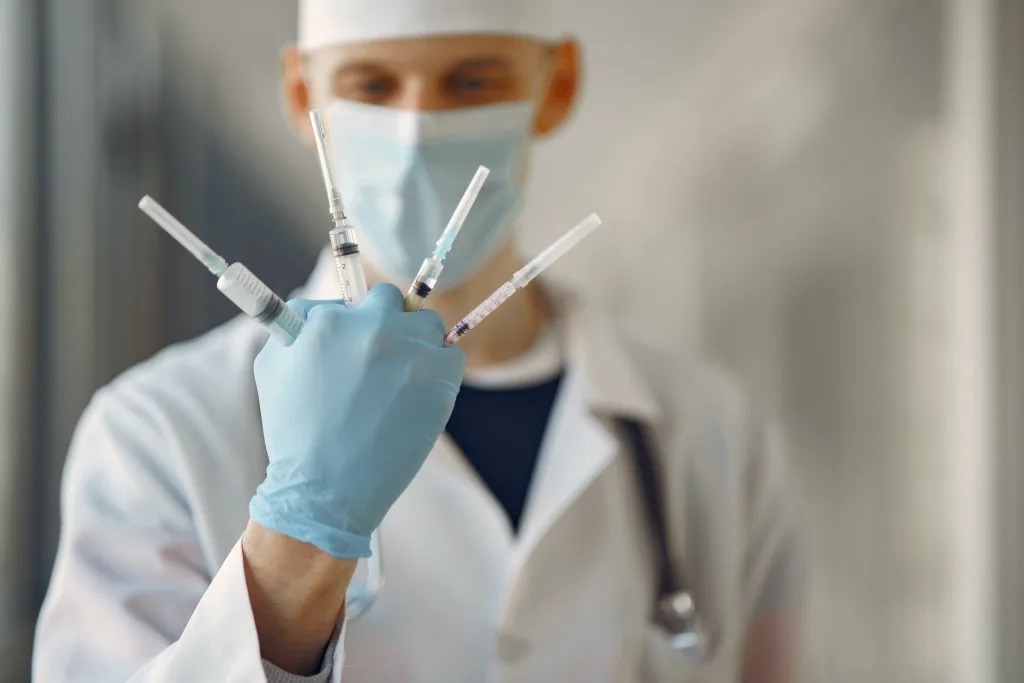Lipotropic injections have been growing in popularity as a method for aiding weight loss and improving fat metabolism. With the allure of quick and easy fat reduction, many have begun pursuing these injections to reach their body goals. However, lipotropic injections are not risk-free, and come with potential safety concerns and side effects. In this comprehensive blog, we’ll explore lipotropic injections in-depth, unpacking everything you need to know about their purpose, benefits, precautions, and possible adverse reactions. Understanding the full picture can empower you to make informed choices aligned with your health and wellness goals.

Defining Lipotropic Injections
Let’s begin by defining what exactly lipotropic injections are. Lipotropics are substances that promote or enable the export of fat out of the liver and other tissues in the body. They essentially help catalyze the breakdown of fat during metabolism.
The most common lipotropic injection blend contains three key active ingredients:
- Methionine – An essential amino acid that helps prevent excess fat buildup in the liver while also breaking down existing fatty deposits. It accomplishes this by increasing the production of glutathione, a compound that helps transport fat out of the liver. Methionine also acts as an antioxidant and helps remove toxins.
- Inositol – A B-vitamin that aids in fat metabolism and cellular function throughout the body. It helps transport fat out of tissues, maintain healthy cholesterol levels, and regulate insulin activity.
- Choline – Another B-vitamin that assists with fat transportation and metabolism, especially in the liver. Choline is a versatile nutrient that also supports nerve health, brain development, muscle movement, mood, and energy.
Additional synergistic vitamins and minerals like vitamin B12, chromium, zinc, magnesium, and others may also be added to the injection blend. These further assist with energy production, protein synthesis, blood sugar control, and accelerated weight loss.
When injected into the subcutaneous fat tissues under the skin, these lipotropics can enter directly into the bloodstream without being degraded or excreted. This allows for rapid uptake and utilization by the body to start mobilizing fat stores. Some lipotropic formulations are meant for weekly injections, while others are designed for daily self-administration to maintain high lipotropic levels.

Medical Uses of Lipotropic Injections
Lipotropic injections may be prescribed for a variety of medical conditions and health goals:
- Fatty Liver Disease – One of the most common uses is treating non-alcoholic fatty liver disease (NAFLD). The lipotropics help reduce fat accumulation and clear triglycerides from the liver.
- High Cholesterol – The fat mobilizing effects combined with inositol’s cholesterol regulation can lower blood lipid levels and improve cardiovascular markers.
- Weight Loss – The injections enhance fat breakdown, energy expenditure, and metabolism to help manage obesity and/or achieve cosmetic fat loss.
- Digestion – Improving fat metabolism and bile production aids digestion, nutrient absorption, and may relieve constipation.
- Nerve Function – B-vitamins support nerve health and repair, which helps neurological conditions.
- Energy – Lipotropics provide direct nutritional support to restore energy levels in those with deficiencies or fatigue.
With a concentrated dose of vitamins and amino acids directly into the bloodstream, lipotropic injections can have targeted therapeutic effects. However, safety should still be the priority when considering this injection therapy.
Safety Precautions for Administration
While promising, lipotropic injections are not completely without risks or side effects. As such, certain precautions need to be taken to ensure they are administered safely:
- Medical Supervision – It is highly recommended to consult a qualified healthcare provider before starting lipotropic injections. Receiving injections without medical approval and monitoring can be dangerous. Your doctor or nurse can verify you are a candidate, explain proper injection techniques, prescribe the right dosage, and monitor your health progress. Trying to self-administer without professional guidance is not advised.
- Allergy Assessment – Always inform your provider regarding any allergies or sensitivities you may have, especially to medications, sulfur-containing drugs, anesthetics, shellfish, B-vitamins, and minerals. An allergy skin test may be conducted prior to starting injections to assess risks. People with allergies should use caution.
- Medical History Screening – Your doctor will thoroughly screen your personal and family medical history, health conditions, and medications to check for potential contraindications. People with liver disorders, kidney disease, diabetes, bleeding disorders, autoimmune conditions, or who take blood thinners may not be suitable candidates.
- Administration Techniques – Strict sterile procedures must be followed when administering lipotropic injections to avoid infections. Use of single-use disposable needles, proper skin cleansing, rotating injection sites, and proper needle insertion depth are all imperative for safety.
- Dosage Schedule – The dosage and frequency should be tailored to your health needs and supervised by a doctor. Too high doses or overly frequent administration can increase risks. Follow your prescribed regimen.
With proper medical guidance and monitoring, lipotropic injections can be administered quite safely in appropriate candidates. However, potential side effects still need to be discussed.

Possible Side Effects and Adverse Reactions
While not universally experienced by all patients getting lipotropic injections, the following adverse reactions may be possible:
- Injection Site Reactions – Some temporary discomfort, stinging, bruising, swelling, redness, or tenderness may occur at the injection spot. This tends to resolve within a day. Using cold compresses can alleviate inflammation. Staying properly hydrated also promotes healing.
- Digestive Upset – As lipotropics stimulate the liver and increase bile production, some people may experience nausea, vomiting, diarrhea, or abdominal pain. This is usually transient, but can be minimized by starting with smaller doses and slowly increasing over several injections to allow your body to adapt and adjust. Drinking ginger, peppermint, or chamomile tea may ease any nausea.
- Allergic Reactions – Allergies to any components in the lipotropic injection blend can potentially trigger hives, itching, rash, swelling, anaphylaxis, or other immune reactions. Seek prompt emergency care if you experience signs of a serious allergic reaction. Those with shellfish allergies should be aware that choline is synthesized from crustacean shells.
- Rare Complications – While very uncommon, there is a small risk of certain adverse events like pancreatitis, blood clotting, pulmonary embolism, liver toxicity, or metabolic issues if lipotropic injections are improperly administered at too high doses or frequency for prolonged periods without medical monitoring. Your doctor will take care to prescribe and monitor your regimen to avoid such severe complications.
Being aware of the range of possible side effects allows you to make an informed decision, and recognize any reactions that may warrant medical attention. With proper precautions, serious adverse events are very unlikely. Still, considering your individual risk profile is advised.
Evaluating Your Personal Risks and Benefits
Because everyone responds uniquely based on their own health profile, it is smart to thoroughly evaluate your potential risks versus benefits with your healthcare provider before proceeding with lipotropic injections:
- Individual Biochemistry – Your genetics, liver health, metabolism, diet, medication use, pre-existing conditions and more can impact your response to lipotropics. Reactions vary drastically between different people. What works for someone else may not be ideal for you.
- Goals and Lifestyle – Consider your reasons for wanting lipotropic injections, as well as how committed you are to complementary lifestyle changes. Those seeking moderate cosmetic fat loss may get minimal results compared to those with obesity, NAFLD, or digestive disorders. Realistic expectations are key.
- Alternatives First – Nutrition adjustments, exercise regimens, stress reduction, and certain supplements can also aid healthy fat loss in some cases before turning to more invasive methods. Trying safer options first may make sense. Lifestyle changes also help maintain results long-term.
- Medical Judgment – Your doctor or nurse practitioner can best advise if lipotropic injections are appropriate for your situation based on a holistic evaluation of your health history, profile, goals, and risks. Their medical judgment should guide your decision.
Balancing the pros and cons requires an honest self-assessment of your health status. What works for one person may not for another. There are no universal guarantees.

Key Considerations and Summary Points
To wrap up this deep dive into lipotropic injections for fat loss, here are some concluding highlights to equip your decision process:
- Lipotropic injections like methionine, inositol, and choline may offer accelerated fat breakdown, metabolism improvement, and potentially faster results if your biochemistry responds well. Everyone is different.
- Medical supervision, proper administration techniques, sterile equipment, and correct dosage protocols are critical to maintaining safety and minimizing adverse reactions.
- Potential side effects range from mild injection site discomfort to rare major complications if misused. Monitor your response.
- Non-invasive options like lifestyle adjustment may provide sufficient fat loss for many goals without injections. Discuss options thoroughly.
- Make empowered, informed choices that align with your health needs and comfort level based on honest self-evaluation and wise medical counsel.
- Prioritize your overall wellbeing, not just aesthetic outcomes. Sustainable healthy living protects your progress long-term. Keep learning!
The more you educate yourself on lipotropic injection facts, safety, side effects, and considerations, the better equipped you’ll be to make choices that serve your health and goals. Work closely with your doctor, listen to your body, and stay balanced. You have the power to pursue the change you seek in the wisest way.
Embarking on Your Wellness Journey
We all want to look and feel our best. But your power lies in making sure you approach that mission in a safe, sustainable and holistic manner. With the right support and mindset, you can get there. Focus on consistent healthy living, not extreme measures or quick fixes that compromise your wellbeing. Be compassionate with yourself. Stay patient and positive in the process. You deserve to feel empowered in caring for your whole self – mind, body and spirit. Keep that your true north.
I hope this deep dive has equipped you to make educated decisions about lipotropic injections or other avenues for reaching your wellness goals. Remember to appreciate and care for the body you have. It serves you each day, housing your spirit and enabling your dreams. Pursue paths that honor and elevate your whole person. That is where lasting fulfillment lives. Keep shining brightly!
Thank you for reading this post, don't forget to subscribe to our free newsletter
!
